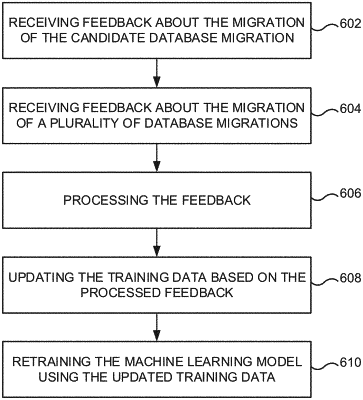| CPC G06N 5/04 (2013.01) [G06F 16/214 (2019.01); G06N 20/20 (2019.01)] | 20 Claims |

|
1. A method for generating machine learning predictions for database migrations, the method comprising:
storing an ensemble machine learning model comprising a set of trained machine learning models configured to predict database migration methods using database migration information, wherein a plurality of parameters of the set of trained machine learning models are trained using training data comprising a plurality of training instances that includes migration information and one or more migration method labels, and the migration information of the training instances includes a source database type and a target database infrastructure;
receiving migration information for a candidate database migration that includes a source database type and a target database infrastructure; and
predicting, using the set of trained machine learning models, migration methods based on the migration information for the candidate database migration, wherein the predicting comprises performing calculations by applying, using a computer processor, the trained plurality of parameters of the set of trained machine learning models to the migration information for the candidate database migration to generate the predicted migration methods,
wherein updated training data is generated and used to retrain the ensemble machine learning model, and the updated training data is generated using previous migration method predictions and feedback indicative of results for the previous migration method predictions.
|